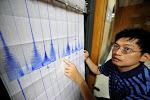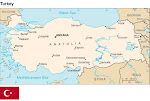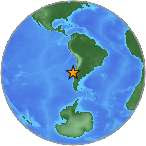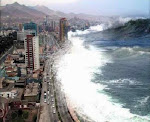 CARPENEDA DI VOBARNO, Italy-When the earth trembled in Assisi 10 years ago, toppling frescoed sections of the vault of the Basilica of St. Francis, the world took notice.Yet earthquakes are common in Italy. In the last year alone 491 events registered 2.5 or higher on the Richter scale, meaning they could be felt, even if they did not necessarily cause damage.Now Italy’s Culture Ministry has implemented guidelines that it hopes will mitigate the threat that earthquakes pose to the country’s artistic heritage.“Italy’s patrimony has been lost because we used to intervene after the fact and not before,” said Roberto Cecchi, general director of the Architectural Heritage and Landscape Department, which is responsible for the safekeeping of Italy’s monuments.Under the new guidelines unveiled this summer, officials at the local and national levels are to evaluate the seismic risk to individual structures in their jurisdictions and take steps to reduce the vulnerability. These steps could include using steel chains to join the walls together, or employing carbon fiber strips in the walls and the vaulting as a sort of flexible bandage“The idea is to see a structure as a sort of box that is more resistant if the vertical and the horizontal elements work together,” said Laura Moro, an architect at the Culture Ministry. “In a seismic area sooner or later something will happen. The problem is that for years this issue was totally ignored.”The residents of this town on the shore of Lake Garda-in northern Italy, between Venice and Milan-realized that a minute before midnight on Nov. 24, 2004, when an earthquake registering 5.2 damaged hundreds of buildings. Since then Mauro Biasin, an architect, has been overseeing the restoration of nearly 300 damaged churches and monasteries. Many are still closed and carry signs saying, “Closed because of earthquake damage.” There were no deaths, but Mr. Biasin points out that had it struck exactly one month later, the churches would have been filled for Christmas Eve.The church of Santa Margherita di Scozia in Carpeneda di Vobarno above Lake Garda was built in 1949, just a few years before anti-earthquake construction regulations went into effect. The 2004 earthquake detached the facade and opened gaping cracks on the triumphal arch as well as minor cracks above the windows. It also loosened and rotated beams, Mr. Biasin said....
CARPENEDA DI VOBARNO, Italy-When the earth trembled in Assisi 10 years ago, toppling frescoed sections of the vault of the Basilica of St. Francis, the world took notice.Yet earthquakes are common in Italy. In the last year alone 491 events registered 2.5 or higher on the Richter scale, meaning they could be felt, even if they did not necessarily cause damage.Now Italy’s Culture Ministry has implemented guidelines that it hopes will mitigate the threat that earthquakes pose to the country’s artistic heritage.“Italy’s patrimony has been lost because we used to intervene after the fact and not before,” said Roberto Cecchi, general director of the Architectural Heritage and Landscape Department, which is responsible for the safekeeping of Italy’s monuments.Under the new guidelines unveiled this summer, officials at the local and national levels are to evaluate the seismic risk to individual structures in their jurisdictions and take steps to reduce the vulnerability. These steps could include using steel chains to join the walls together, or employing carbon fiber strips in the walls and the vaulting as a sort of flexible bandage“The idea is to see a structure as a sort of box that is more resistant if the vertical and the horizontal elements work together,” said Laura Moro, an architect at the Culture Ministry. “In a seismic area sooner or later something will happen. The problem is that for years this issue was totally ignored.”The residents of this town on the shore of Lake Garda-in northern Italy, between Venice and Milan-realized that a minute before midnight on Nov. 24, 2004, when an earthquake registering 5.2 damaged hundreds of buildings. Since then Mauro Biasin, an architect, has been overseeing the restoration of nearly 300 damaged churches and monasteries. Many are still closed and carry signs saying, “Closed because of earthquake damage.” There were no deaths, but Mr. Biasin points out that had it struck exactly one month later, the churches would have been filled for Christmas Eve.The church of Santa Margherita di Scozia in Carpeneda di Vobarno above Lake Garda was built in 1949, just a few years before anti-earthquake construction regulations went into effect. The 2004 earthquake detached the facade and opened gaping cracks on the triumphal arch as well as minor cracks above the windows. It also loosened and rotated beams, Mr. Biasin said....To read more go to:
As in the days of Noah...



















.jpg)


.bmp)
No comments:
Post a Comment